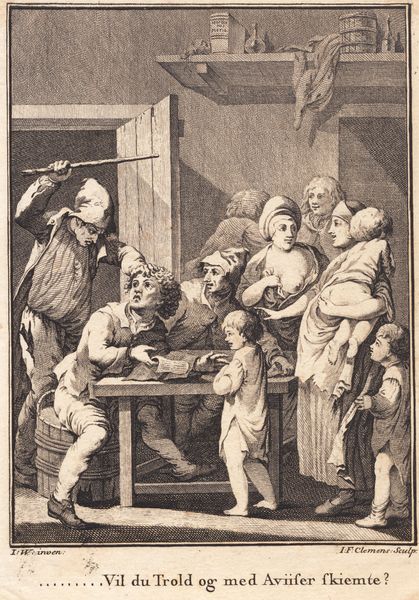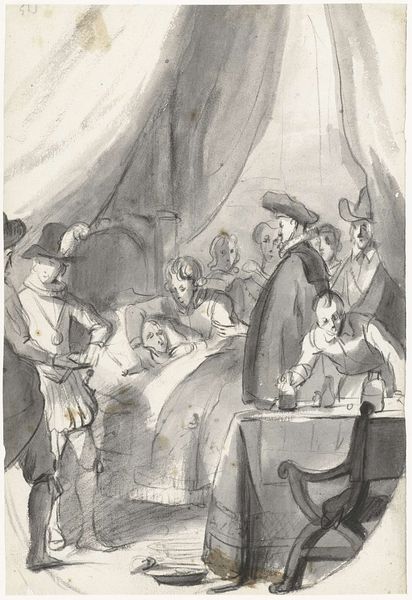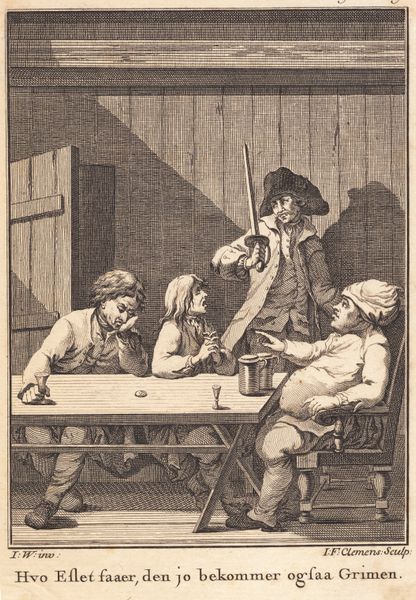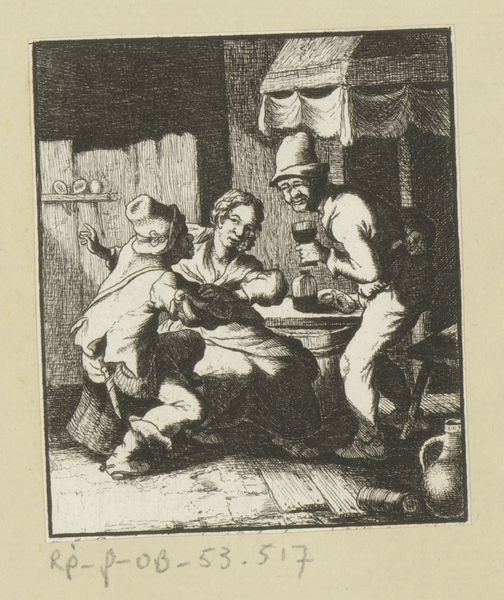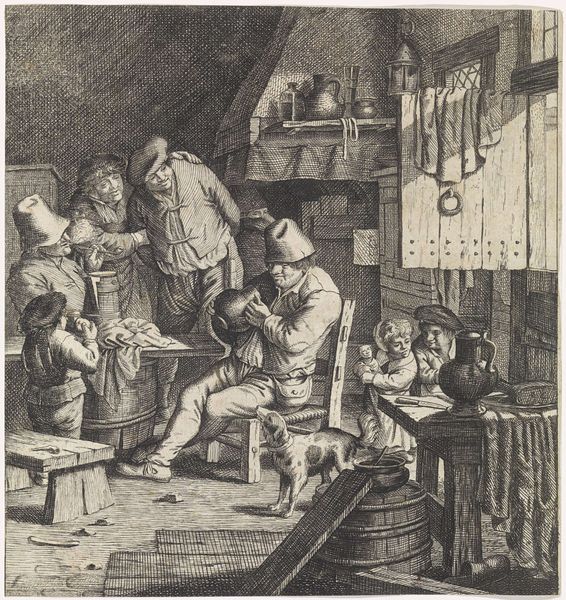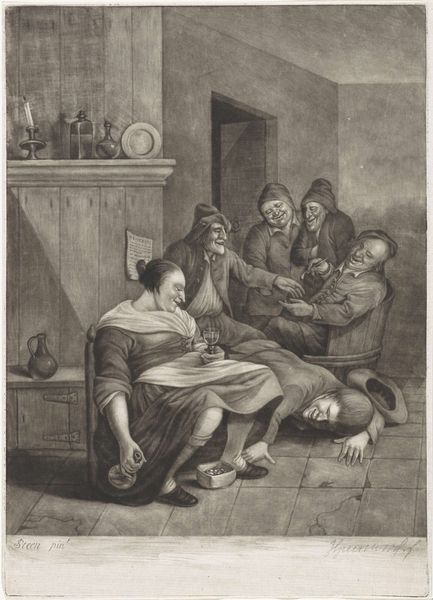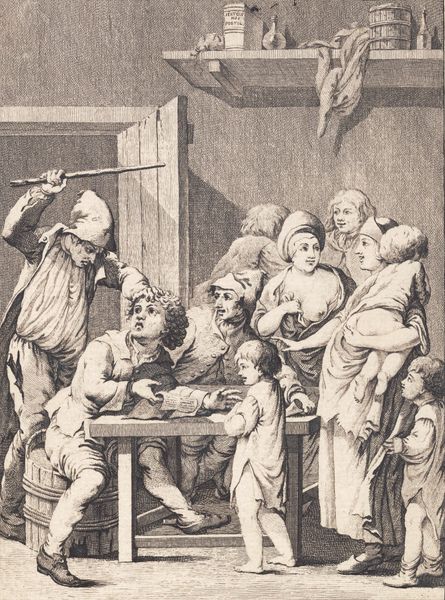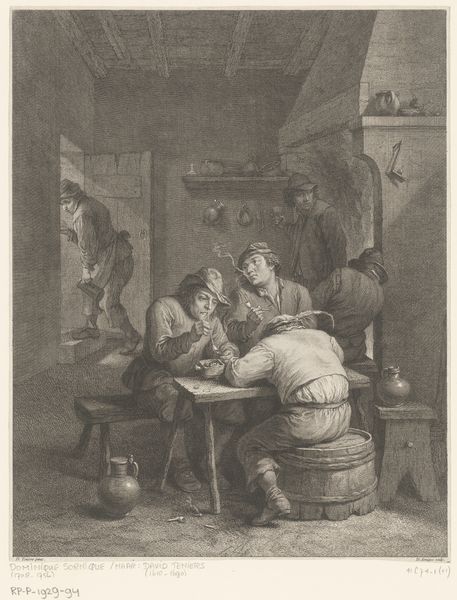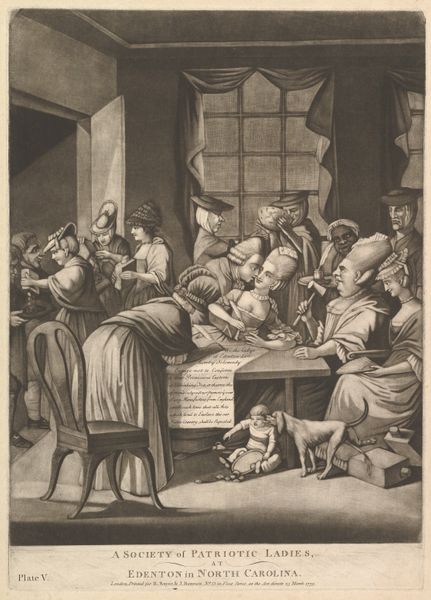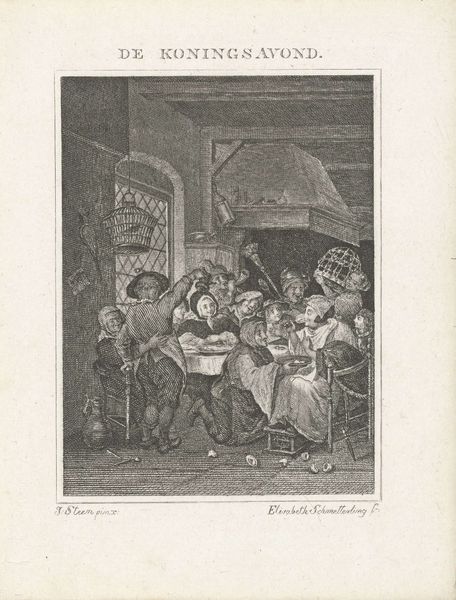
Fotoreproductie van het schilderij 'Kinderen leren een poes dansen, bekend als 'De dansles'' door Jan Havicksz. Steen 1893 - 1912
0:00
0:00
johanmarinusschalekamp
Rijksmuseum
photography, gelatin-silver-print
#
narrative-art
#
dutch-golden-age
#
dog
#
photography
#
group-portraits
#
gelatin-silver-print
#
genre-painting
#
history-painting
Dimensions: height 115 mm, width 101 mm
Copyright: Rijks Museum: Open Domain
Editor: This gelatin silver print, titled "Fotoreproductie van het schilderij 'Kinderen leren een poes dansen, bekend als 'De dansles'," created between 1893 and 1912 and housed in the Rijksmuseum, offers a glimpse into a past painting by Jan Havicksz. Steen. The scene is certainly lively, filled with children, animals, and instruments, but the subdued tones of the photographic print give it an aged quality. What can you tell me about the making and circulation of reproductions such as this? Curator: Considering its existence as a photograph of a painting, we must think about the layers of labor involved. First, Steen’s original construction, the arrangement of figures and domestic items – inherently displays a specific mode of Dutch Golden Age artistry. But now look at the photographic reproduction process. Who made this gelatin silver print? What does it mean that someone reproduced the original image through photography? Think about it this way – we have to ask about access to art and the consumption habits in that time period. Editor: That makes sense. The photographic print makes Steen’s painting available to a broader audience, detaching it from the exclusive world of art collectors. Is this what we should focus on when interpreting a photograph like this? Curator: Precisely. The act of reproduction inherently alters the consumption of the image and questions traditional art historical boundaries. Was this photo intended for scholarship, wider consumption by the public, or both? Editor: So by focusing on the means of production and circulation, we can unpack broader social and cultural meanings embedded in the image. Curator: Exactly. By thinking about process, materials, and their historical context, we go beyond aesthetics. Editor: That's fascinating. Thinking about it in terms of its production opens up many doors of thought that otherwise stay hidden. Curator: Indeed, it pushes us to investigate photography's complex role in mediating our relationship with art.
Comments
No comments
Be the first to comment and join the conversation on the ultimate creative platform.
